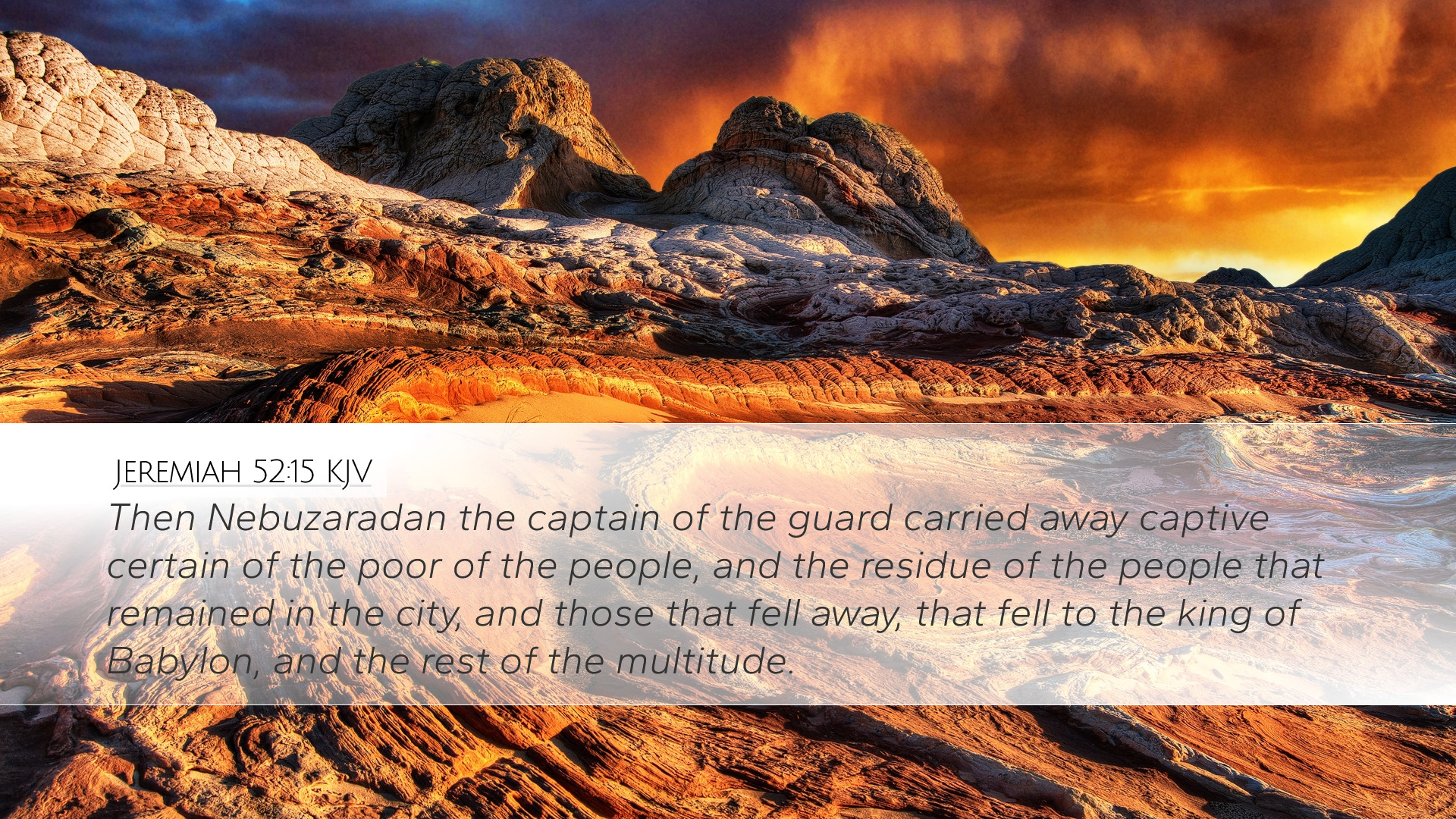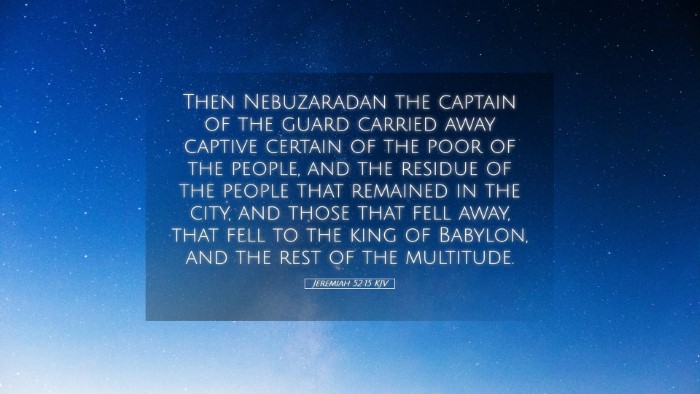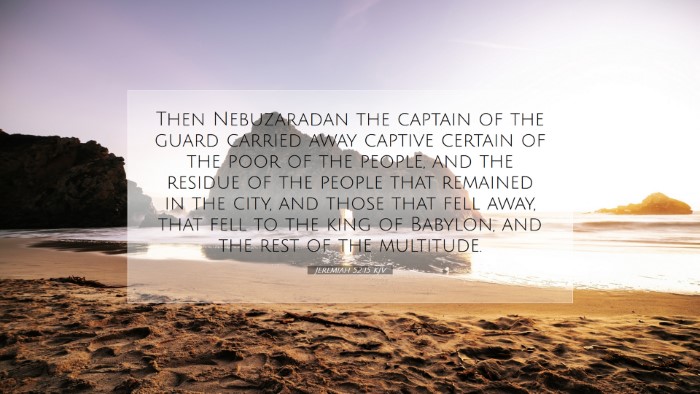Commentary on Jeremiah 52:15
Text of the Verse: "Then Nebuzaradan the captain of the guard carried away captive certain of the poor of the people, and the residue of the people that remained in the city, and those that fell away, that fell to the king of Babylon, and the rest of the multitude."
Introduction
This verse captures a pivotal moment in biblical history during the Babylonian siege of Jerusalem. It highlights the aftermath of the destruction wrought by Nebuchadnezzar and elucidates the fate of the captives. A thorough examination of this text through the lenses of notable biblical commentators provides deeper insights into its theological implications and historical context.
Contextual Analysis
Jeremiah's prophecies, alongside the graphic descriptions of Jerusalem's fall, set the backdrop for understanding this verse. The chapters leading up to Jeremiah 52 detail Israel's rebellion, the prophetic warnings, and God's judgment. This event marks not only the physical destruction of Jerusalem but also the spiritual exile of God's chosen people.
Historical Significance
According to Matthew Henry, the Babylonians’ deportation of the people signifies a definitive end to Jerusalem’s sovereignty. This act underlines God's judgment against a rebellious nation that turned away from Him repeatedly.
Key Figures
The mention of Nebuzaradan is significant; he plays a key role as the captain of the guard who executes the king's orders. Albert Barnes elaborates that Nebuzaradan was likely a high-ranking official or general, illustrating Babylon’s systematic approach toward the conquered territories and its people.
Theological Reflection
This scripture invites profound reflection on God's sovereignty and judgment. Adam Clarke emphasizes that the captives' removal serves as both a punishment for disobedience and a means to further God's plan for redemption. It foreshadows a future restoration, highlighting the dual themes of judgment and hope which permeate the Scriptures.
Divine Justice and Mercy
The act of carrying away the poor showcases God’s divine justice; the strong and prosperous were often the first to face judgment, while the poor remained vulnerable. Matthew Henry notes that this reflects God’s care for the downtrodden and His desire for justice. Yet, within this judgment, there lies the promise of eventual restoration for His people.
Exegesis of Key Phrases
- "carried away captive": This phrase denotes not just physical removal but a deeper spiritual and emotional displacement. It informs us that captivity extends beyond geography.
- "certain of the poor of the people": Indicative of God’s prioritization of the humble, as the poor often reflect the heart of the community and society.
- "the residue of the people": This term suggests remnants, emphasizing hope even in destruction, a theme recurrent in the writings of Albert Barnes.
Application for Today’s Church
Jeremiah 52:15 can provide significant lessons for modern-day believers and the church. The context of captivity can serve as an analogy for spiritual captivity due to sin and disobedience. Adam Clarke encourages the church to recognize the need for repentance and restoration. The history of Israel's exile serves as a reminder of the consequences of turning away from God, while also pointing to the profound grace available in Jesus Christ.
Hope Amidst Despair
The narrative foreshadows the eventual return from exile, resonating with the New Testament message of salvation and hope through Jesus. As Matthew Henry reminds us, every act of divine judgment is laced with divine mercy and potential restoration for those who turn back to God.
Conclusion
In examining Jeremiah 52:15 through various biblical commentaries, we find a rich tapestry of themes that are relevant to our understanding of God’s nature and His dealings with humanity. This verse serves as a solemn reminder of God’s justice and His unending mercy, urging believers to remain steadfast in faith, always ready for the day of renewal that God has promised.


